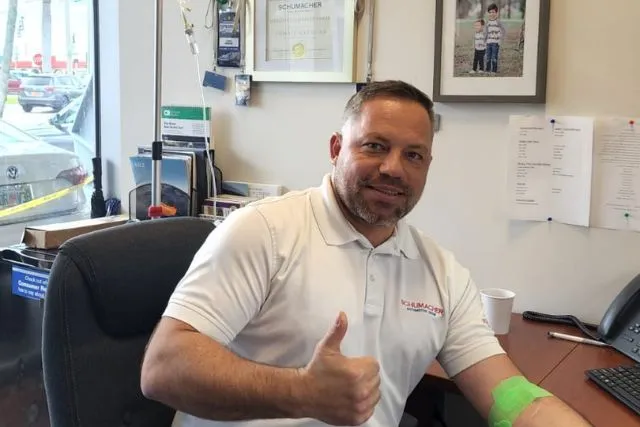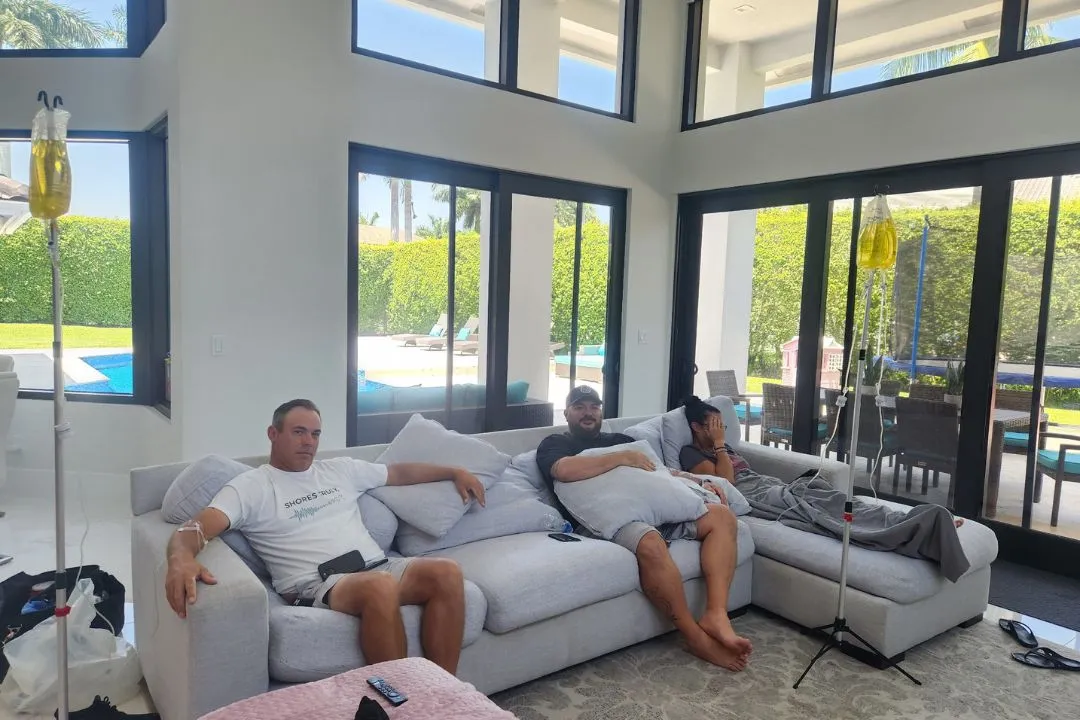Doing the wrong things after IV therapy can lead to unwanted side effects and slow down your recovery. So, it’s important to understand what not to do after IV drip to avoid complications.
Ignoring aftercare steps, like staying hydrated or getting enough rest, can cause discomfort and reduce the effectiveness of your treatment.
If you’ve recently had IV in Palm Beach County or nearby, here are key things to avoid for better recovery and results.
What Happens to Your Body After an IV Drip?
After getting an IV drip, your body quickly absorbs the fluids and nutrients. It helps restore hydration and gives you a boost of energy.
The fluids enter your bloodstream directly, providing quick effects. Many people also notice feeling more alert, refreshed, and less tired after a session.
Your body also gets vitamins and minerals, which can support your immune system and overall health. The effects can vary depending on the type of IV drip. However, most people feel better within hours.
7 Mistakes People Make Post-IV Drip
After taking IV therapy, your body needs proper care to get the most benefit and prevent unnecessary complications. Here are the things WEL Palm Beach advises to avoid:
1. Skipping Rest After the Procedure
After getting an IV drip, your body needs rest to recover. Skipping this step can make you feel more tired or even light-headed. Resting allows your body to absorb the IV fluids and nutrients properly.
It also helps avoid unnecessary strain on your body, giving it time to adjust to the boost you’ve received.
2. Ignoring Hydration Needs
Even though an IV drip boosts hydration, you must continue drinking water afterward. Staying dehydrated can lead to post-IV complications, like headaches or fatigue.
Proper hydration ensures that your body keeps the nutrients flowing and helps your organs function at their best. Drink enough water throughout the day.
3. Overexerting Yourself Too Soon
Your body gets a dose of fluids and nutrients after IV therapy. So, it’s important not to push it too hard. Overexerting yourself too soon can strain your system, causing fatigue or injury. Give yourself time to ease back into physical activity to let the IV treatment do its job.
4. Consuming Alcohol Immediately
Alcohol right after an IV drip can slow down the recovery process. It may interfere with the nutrients you’ve received, reducing their effectiveness.
Drinking alcohol too soon can also lead to dehydration, making it harder for your body to maintain balance. Wait until you feel fully recovered before consuming alcohol.
5. Exposing Yourself to Extreme Temperatures
Your body adjusts after an IV session. Extreme heat or cold can be too much during this time. Hot showers or cold environments can make you feel weak or dizzy.
Try to avoid sudden temperature changes, as they can stress your system while it’s still recovering from the treatment.
6. Not Monitoring for Side Effects
After a vitamin IV drip, it’s essential to watch for any side effects, such as redness or swelling. If you notice any unusual symptoms, don’t ignore them.
Most side effects are mild and temporary, but staying alert helps ensure your safety. Report any concern to your healthcare provider.
7. Neglecting Follow-Up Care
Follow-up care after an IV drip is important to ensure everything goes well. Skipping it may leave potential issues unaddressed, such as dehydration or improper nutrient absorption.
We encourage regular check-ins with our healthcare provider to track your progress and prevent future problems.
Foods and Drinks to Skip for Optimal Recovery
It’s important to avoid certain foods and drinks to ensure the best recovery after IV therapy. Skipping these items will help your body heal more effectively after treatment.
| Food/Drink | Why |
| Alcohol | It dehydrates the body and interferes with nutrient absorption. |
| Caffeine | Too much caffeine can lead to dehydration and disrupt the body’s recovery process. |
| High-Sugar Foods | It can spike insulin levels and slow down the body’s healing process. |
| Fatty and Fried Foods | It can cause digestion issues and slow down the absorption of nutrients. |
| Spicy Foods | It may irritate the stomach, making recovery uncomfortable. |
How to Monitor Your Body After an IV Drip

After an IV drip, it’s important to listen to your body. Paying attention to how you feel can help you recover quickly and avoid complications.
Step 1: Watch for Unusual Side Effects
It’s important to stay alert for any unusual side effects after an IV drip. Common reactions may include dizziness, nausea, or swelling at the injection site. If you experience anything unexpected, it’s best to contact your provider.
After an IV treatment, you should continue to monitor how your body responds to ensure everything is going smoothly. Early detection of side effects can help prevent complications.
Step 2: Check Your Hydration Levels
Even though the treatment provides fluids, your body still needs extra water. Not drinking enough can lead to dehydration, causing fatigue or headaches. Keep a water bottle nearby and sip regularly.
It helps your body absorb the nutrients better and supports a quicker recovery after an IV treatment. Always monitor and record your hydration levels to stay feeling your best.
Step 3: Pay Attention to Energy and Fatigue
After an IV drip, it’s normal to feel more energized. However, you must listen to your body. If you start feeling drained, take it easy. Overdoing it can slow down your recovery.
While this treatment gives you a quick energy boost, rest is still important. Pay attention to how your energy levels fluctuate and take breaks when needed to avoid burnout.
Step 4: Monitor Injection Site for Irritation
Keep an eye on the IV insertion area. Redness, swelling, or pain can be a sign of irritation. They are common but should be monitored closely.
If the discomfort persists or worsens, contact your mobile IV nurse. They can provide advice or assistance with issues at the injection site.
Step 5: Track Your Digestion and Appetite
Pay attention to how your stomach feels after our IV therapy. Some people experience mild nausea or a change in appetite. These can be temporary but important to track.
If digestion feels off or you’re not hungry, try drinking water or eating light, easy-to-digest foods. If issues persist, consult with our healthcare experts for guidance.
Conclusion
Taking care of your body after an IV treatment is essential for maximizing its benefits. Knowing what not to do after an IV drip can make all the difference in ensuring a smooth recovery.
Avoiding common mistakes like skipping rest or ignoring hydration can help you feel better and faster. If you’re looking to boost your overall well-being, our IV treatment is a great choice.
For any issues or concerns, don’t hesitate to contact WEL Palm Beach, your reliable mobile IV therapy provider in Palm Beach County, including Manalapan, Boca Raton, Boynton Beach, Riviera Beach, Palm Springs, Lake Worth, and Wellington.
Frequently Asked Questions
Can I eat after an IV drip?
Yes, you can. Start with light, easy-to-digest foods to avoid any stomach discomfort.
Can I shower after IV drip?
You can shower, but avoid hot water and long showers. However, remember not to get the injection site wet for at least 24 hours to prevent irritation.
Can you exercise after an IV drip?
It’s best to avoid intense exercise right after an IV session. Let your body rest and recover before resuming any physical activity.


Leave a Reply
You must be logged in to post a comment.